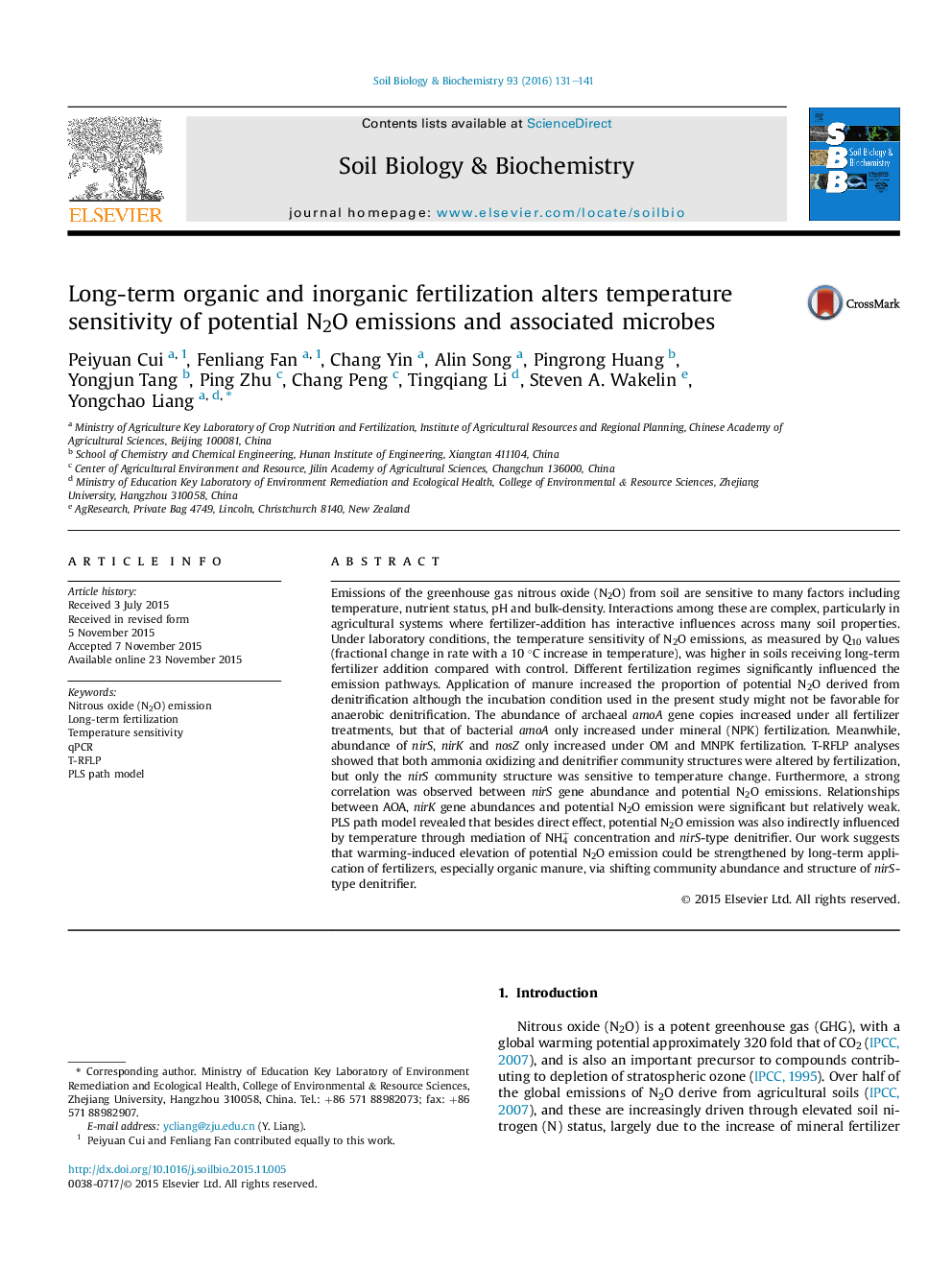| Article ID | Journal | Published Year | Pages | File Type |
|---|---|---|---|---|
| 2024252 | Soil Biology and Biochemistry | 2016 | 11 Pages |
•Long-term fertilization increased temperature sensitivity of soil N2O emission.•Application of manure increased the proportion of N2O derived from denitrification.•Ammonia oxidizer and denitrifier community were altered by fertilization.•Only nirS-type denitrifier was detected to be sensitive to temperature.•Fertilizer affects N2O temperature sensitivity by mediating nirS-type denitrifier.
Emissions of the greenhouse gas nitrous oxide (N2O) from soil are sensitive to many factors including temperature, nutrient status, pH and bulk-density. Interactions among these are complex, particularly in agricultural systems where fertilizer-addition has interactive influences across many soil properties. Under laboratory conditions, the temperature sensitivity of N2O emissions, as measured by Q10 values (fractional change in rate with a 10 °C increase in temperature), was higher in soils receiving long-term fertilizer addition compared with control. Different fertilization regimes significantly influenced the emission pathways. Application of manure increased the proportion of potential N2O derived from denitrification although the incubation condition used in the present study might not be favorable for anaerobic denitrification. The abundance of archaeal amoA gene copies increased under all fertilizer treatments, but that of bacterial amoA only increased under mineral (NPK) fertilization. Meanwhile, abundance of nirS, nirK and nosZ only increased under OM and MNPK fertilization. T-RFLP analyses showed that both ammonia oxidizing and denitrifier community structures were altered by fertilization, but only the nirS community structure was sensitive to temperature change. Furthermore, a strong correlation was observed between nirS gene abundance and potential N2O emissions. Relationships between AOA, nirK gene abundances and potential N2O emission were significant but relatively weak. PLS path model revealed that besides direct effect, potential N2O emission was also indirectly influenced by temperature through mediation of NH4+ concentration and nirS-type denitrifier. Our work suggests that warming-induced elevation of potential N2O emission could be strengthened by long-term application of fertilizers, especially organic manure, via shifting community abundance and structure of nirS-type denitrifier.
